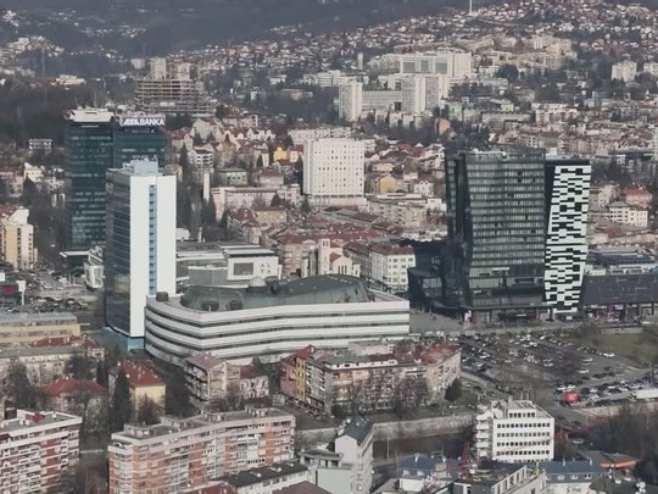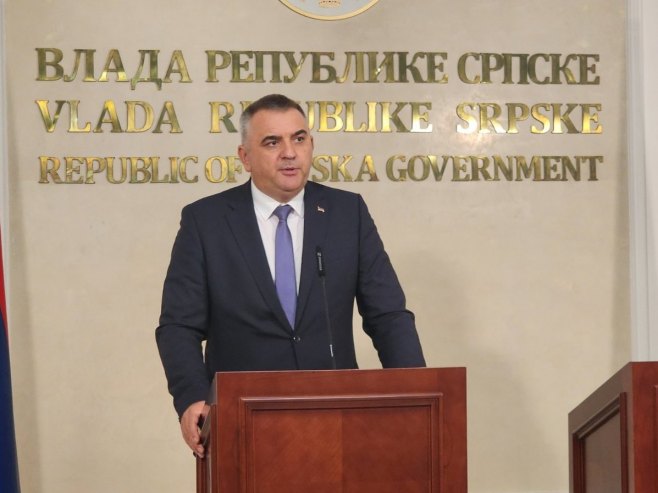Over the past three years, nine incidents targeting property owned by Serbs and the Serb Orthodox Church have been reported in the Federation of Bosnia and Herzegovina (FBiH), according to data from four cantonal interior ministries (MUPs) that responded to Srna’s inquiry.
The information was provided by the MUPs of the Una-Sana, Livno, Posavina, and West Herzegovina cantons.
According to their reports, eight cases involved harassment, unlawful entry into religious property, destruction of property, and disturbance of the peace of the deceased, while one case related specifically to an attack on a religious site.
The remaining six cantonal MUPs in the FBiH failed to respond to Srna’s request for data on reported attacks targeting property owned by Serbs or the Serbian Orthodox Church (SOC) over the same period.
The Una-Sana Canton Police Administration recorded eight reports involving harassment, unlawful entry into religious property, damage to another’s property, and desecration of graves. Police units undertook all legally prescribed actions and measures.
Of those, one report on undertaken measures was submitted to the cantonal prosecutor’s office, four reports concerned criminal offenses, and in one case the prosecutor was notified about a crime punishable by up to five years in prison. The remaining cases were determined not to meet the threshold for criminal or misdemeanor proceedings.
The Livno Canton MUP stated that it does not keep records of victims of crimes by national structure and therefore cannot provide data on reports of attacks targeting Serb-owned property.
Regarding attacks on Serbian Orthodox religious sites, the MUP recorded one case—a theft of three electric floodlights from the yard of the Holy Trinity Orthodox Church in the village of Vrbica, municipality of Livno.
The same MUP reported no recorded attacks or intimidation targeting Serb returnees or their property in its area of responsibility.
No attacks were reported in the Posavina or West Herzegovina cantons either. The West Herzegovina MUP confirmed that no incidents of intimidation or discrimination against returnees on ethnic grounds were recorded during the past three years.
The Federal Police Administration also stated that it does not have data on individual cases involving attacks on Serb property or religious sites during this period.
However, official data do not reflect the situation on the ground. In the Zenica-Doboj Canton, the most recent desecration of an Orthodox cemetery occurred on October 20 in the village of Gornji Tičići near Kakanj, where a gravestone belonging to Janko Đorđe Simić was smashed.
Earlier that month, vandals attacked a chapel at the Serb Orthodox cemetery in Karaula near Kakanj.
In the Kakanj municipality alone, chapels in Krsti in Mošćanica and Viduša above Bilješevo were broken into, a chapel at Plandište was stoned, and a cemetery in the village of Danci was desecrated—along with dozens of similar incidents over the past year that remain unresolved and without identified perpetrators.
In the Tuzla Canton, which also failed to respond to Srna’s request, the Cathedral Church of the Dormition of the Most Holy Theotokos was desecrated on July 18, when perpetrators damaged the icon stand of Blessed Matrona of Moscow, broke into the church shop, and stole donation money.
Media also reported an incident on July 22, when a young man from Serbia was beaten in downtown Tuzla for wearing a Red Star football shirt.
In June, several gravestones were desecrated at the Orthodox cemetery in the Serb village of Kovačići near Kladanj. The same cemetery had been previously targeted, and in earlier years, several tombstones were completely destroyed in the Serb Orthodox cemetery in Tupkovići, municipality of Živinice.
The MUP of the Herzegovina-Neretva Canton also failed to provide information, despite incidents in which, between July 16 and 17, a car belonging to the Serb returnee family Čvoro was set on fire in their yard in the Mostar neighborhood of Rudnik. Earlier, on June 14 last year, another Serb, Drago Rupar, had his car torched in Mostar.
In August 2024, a series of attacks targeted Serb children and returnees in Mostar. The eighth attack that year occurred in the Baćevići neighborhood, where Serb children were physically assaulted on a playground.
Prior to the attack, unknown individuals had plastered the playground and nearby streets with posters depicting swastikas, the Ustasha “U” symbol, and HVO inscriptions.
In the village of Olovci, municipality of Kladanj, a wooden cross on property belonging to a Serb Orthodox family was repeatedly destroyed. Illegal logging on Serb-owned land was also recorded near Bihać, Ozren, Petrovac, Livno, and in areas surrounding Sarajevo and Zenica.
Serb returnees are not the only targets—attacks have also affected Serbs from the region. In March, high school students from Novi Sad were beaten with metal rods in Sarajevo, while a recent incident in Tuzla saw a young man attacked for wearing a “Delije” (Red Star supporters) T-shirt.
Verbal assaults against Serbs in the Federation have also been frequent, including a February 27 incident near the Presidency building in Sarajevo, where an assailant threatened and photographed Serbs from Pale.
Source: RTRS








